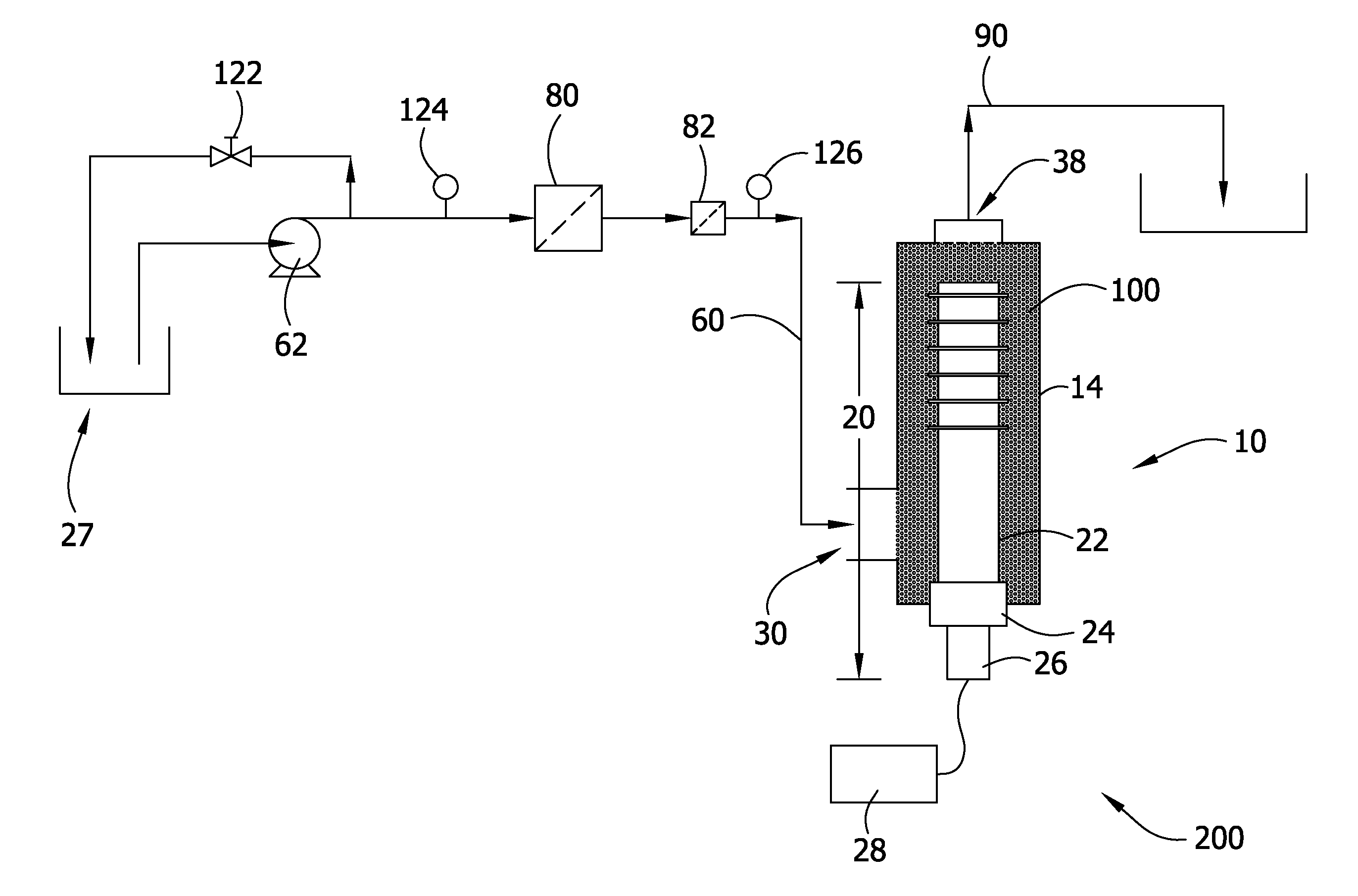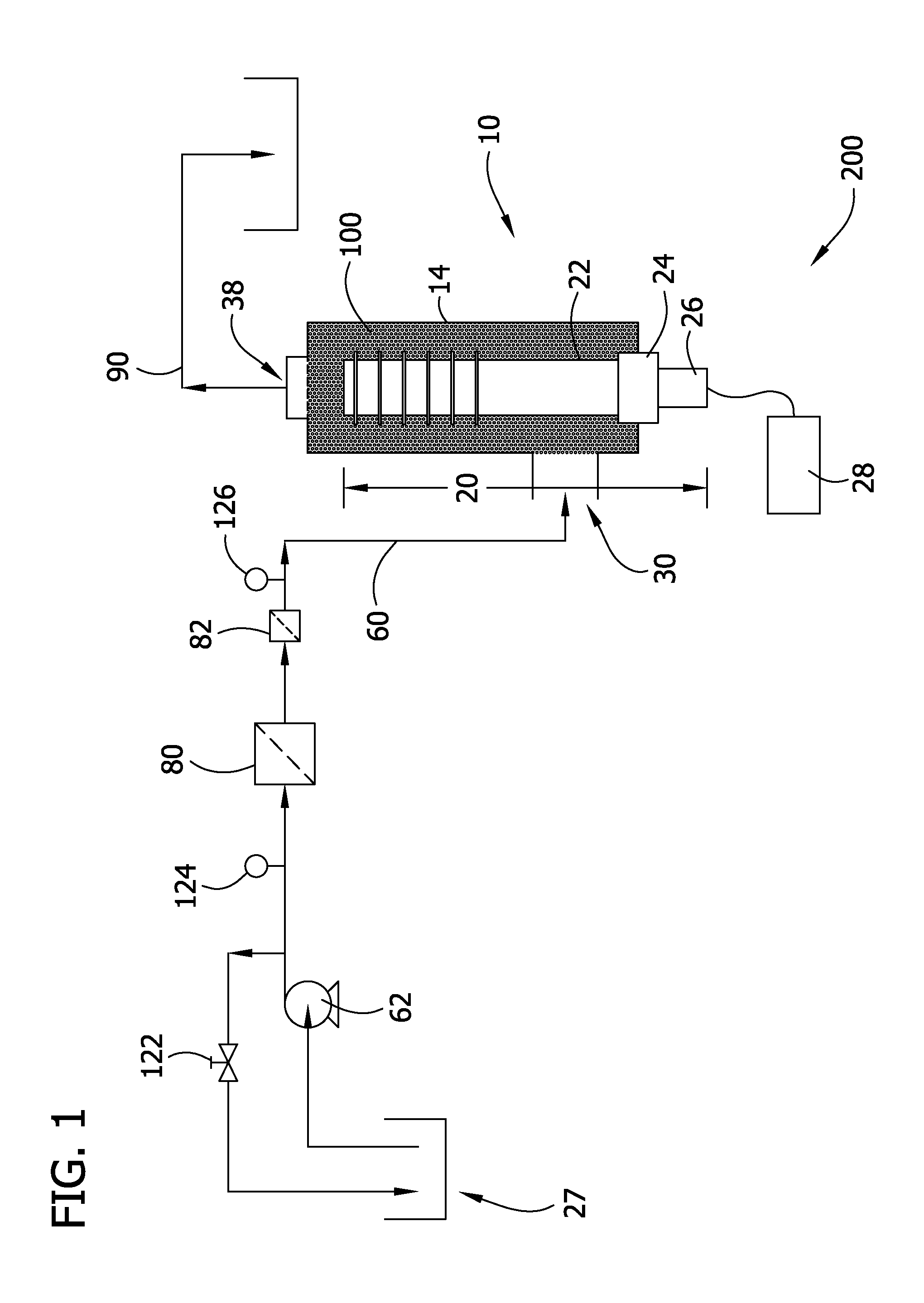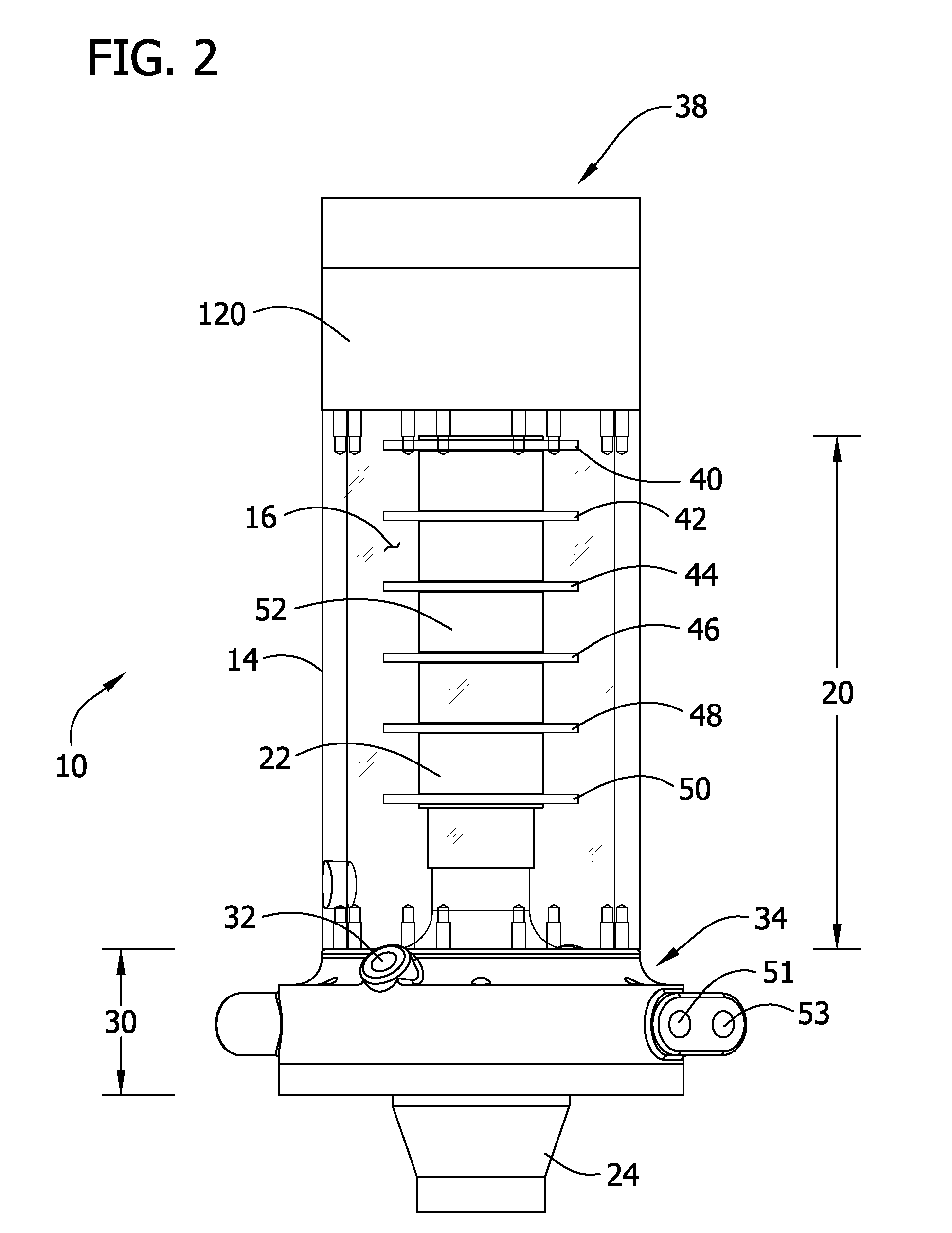Ultrasonic Treatment System For Separating Compounds From Aqueous Effluent
a technology of aqueous effluent and treatment system, which is applied in the direction of water/sewage treatment by ion exchange, water/sewage treatment by oxidation, and separation processes, etc., can solve the problems of increasing the time and cost of the removal of unbound dyes, requiring large volumes of adsorbent to perform effectively, and improving the ability to remove compounds. , the effect of thin hydrodynamic boundary layer
- Summary
- Abstract
- Description
- Claims
- Application Information
AI Technical Summary
Benefits of technology
Problems solved by technology
Method used
Image
Examples
Embodiment Construction
[0018]The present disclosure is generally directed to an ultrasonic treatment system for removing compounds from aqueous effluent. Specifically, in one embodiment, the ultrasonic treatment system is capable of removing dyes and reactants from textile effluent. In another embodiment, the ultrasonic treatment system removes microorganisms and other contaminants from drinking water.
[0019]FIG. 1 provides an ultrasonic treatment system, generally indicated at 200, to remove compounds from aqueous effluent in accordance with the present disclosure. Generally, the ultrasonic treatment system 200 comprises an ultrasonic treatment chamber 10. In particular, the treatment chamber 10 is suitable for use in ultrasonic treatment systems in which ultrasonic agitation of the effluent is desired in an in-line, e.g., continuous flow process in which fluid (e.g., aqueous effluent) flows continuously through the chamber. It is contemplated, though, that the treatment chamber may be used in an ultrason...
PUM
| Property | Measurement | Unit |
|---|---|---|
| Fraction | aaaaa | aaaaa |
| Fraction | aaaaa | aaaaa |
| Time | aaaaa | aaaaa |
Abstract
Description
Claims
Application Information
 Login to View More
Login to View More - R&D
- Intellectual Property
- Life Sciences
- Materials
- Tech Scout
- Unparalleled Data Quality
- Higher Quality Content
- 60% Fewer Hallucinations
Browse by: Latest US Patents, China's latest patents, Technical Efficacy Thesaurus, Application Domain, Technology Topic, Popular Technical Reports.
© 2025 PatSnap. All rights reserved.Legal|Privacy policy|Modern Slavery Act Transparency Statement|Sitemap|About US| Contact US: help@patsnap.com



